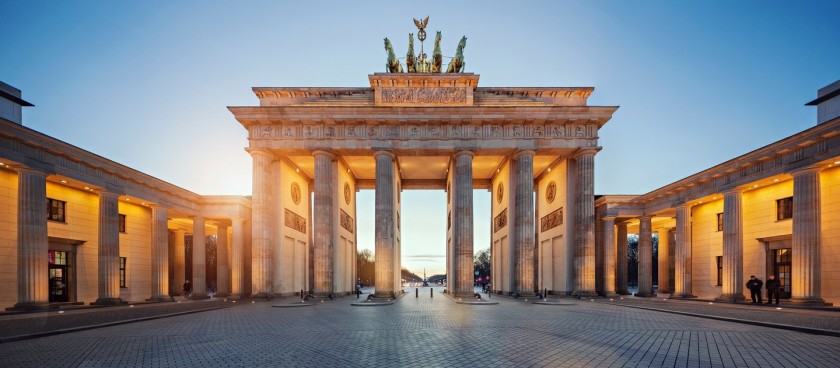
- #DE07
- Pariser Platz, 10117 Berlin, Germany
- berlin.de
- Prices*:
FREE - * - opening and closing times as well as entrance prices, are subject to alterations without notice. Visitors are advised to check before visiting.
- 52.5162760, 13.3777040 Copy to clipboard Copy
-
#Architectural Oddities , #History
Architecturally, the sandstone Brandenburg Gate also represents one of the earliest and most attractive examples of a neo-classical building in Germany.
History – the Brandenburg Gate
Constructed between 1788 and 1791, the Brandenburg Gate was Berlin’s first Greek revival building. Designed by Carl Gotthard Langhans, architect to the Prussian court, it was inspired by the monumental gateway at the entrance to the Acropolis in Athens. The Brandenburg Gate is 26 metres high, 65.5 metres long and 11 metres deep, and supported by two rows of six Doric columns.
In 1793, the gate was crowned by the Quadriga statue, designed by Johann Gottfried Schadow. This statue also has its own story to tell. In 1806, when Napoleon’s army took Berlin, the French Emperor had the Quadriga transported to Paris as war booty and a sign of his victory. In 1814, after Napoleon’s forced abdication, the Quadriga was returned to Berlin where it once again adorned the Brandenburg Gate, facing towards the east and the city centre.
In 1946, with the post-war division of Germany and Berlin, the Brandenburg Gate was in the Soviet sector. When the Berlin Wall went up in 1961, the Gate stood in an exclusion zone in an arc of the Wall, inaccessible for locals and visitors alike. When the Wall fell, 100,000 people gathered here for the Brandenburg Gate’s official opening on 22 December 1989 – and soon afterwards, crowds thronged the area to celebrate their first joint New Year’s Eve in this once-divided city. Today, more than almost any other of the city’s landmark sights, the Brandenburg Gate symbolises a reunited Berlin.
Architecture – Pariser Platz square
The Brandenburg Gate faces Pariser Platz, regarded as one of the city’s most attractive squares. By the end of the Second World War, the buildings around this historical square were in ruins. Reconstruction at this prime location only started in the 1990s after German reunification, and the buildings now include elegant town houses, embassies and the impressive five-star Hotel Adlon.
The Max Liebermann Haus and the Haus Sommer, set to the left and right of the Brandenburg Gate, were designed as a matching pair in a style inspired by the architecture of the Prussian master builder and court architect Friedrich August Stüler. This historic location is also home to two other prominent buildings housing the embassies of France and the United States.
Of course, the Brandenburg Gate never closes – so you can visit it any day in the year. But your visit here can also be part of a truly memorable event! Why not enjoy the fantastic atmosphere at the renowned New Year’s Eve party to welcome in the New Year Berlin-style – with live music down on the party mile and a stunning fireworks display! Or join the hundreds of thousands of fans at the large screens cheering on their football teams in the summers of the FIFA World Cup or the UEFA EURO championships. But on any day of the year, the Brandenburg Gate is a magnet for locals and visitors – not only emblematic of German unity, but also the Berlin lifestyle!